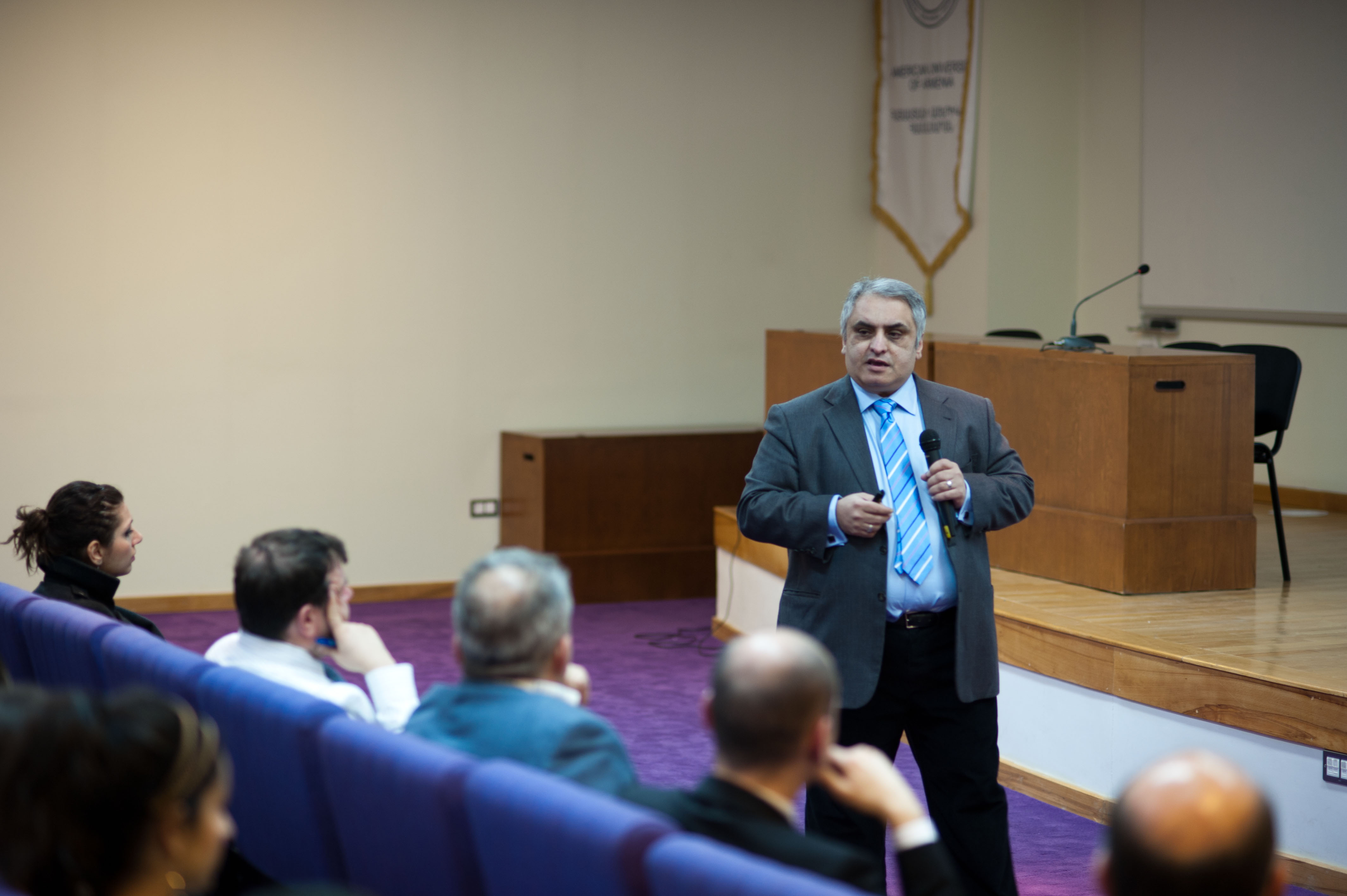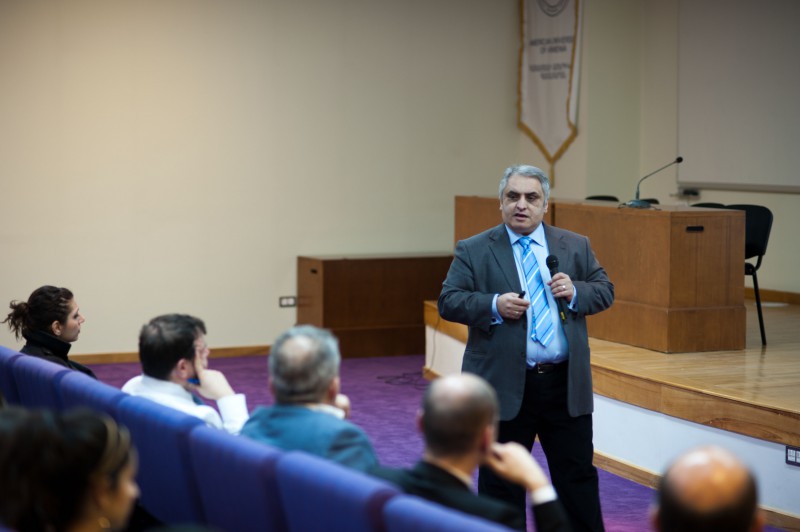
Thinking About Thinking: Advocacy, Diplomacy and the Armenian Genocide
< 1 min readYEREVAN–Arthur G. Martirosyan, the founder and director of the Centers for Excellence in Negotiation, spoke at the American University of Armenia (AUA) on Monday, March 25, about the use of advocacy and diplomacy in the drive for Armenian Genocide recognition.
The interactive lecture, titled “Introducing Diplomacy: Genocide Recognition, Reparations, Reconciliation in a World of the Realist International Politics,” was part of the ongoing Thinking About Thinking lecture series organized by AUA and the Luys Foundation.
Martirosyan presented a historical context of the issue, underscoring how national efforts to achieve Genocide recognition and reparations have largely focused on advocacy by interest groups. He discussed how lobbying campaigns have largely targeted legislatures and executives in key countries, pushing for agendas which do not necessarily consider and meet the underlying interests of the other side. Martirosyan posited that while this has had an effect to some extent, it seems to have reached an impasse.
For Martirosyan, it is imperative to rethink the strategy and shift the focus from advocacy to diplomacy. During the presentation, he made the case for why agendas stressing “justice” and “rights” should be redefined in terms of real-politick dynamics, identifying the points where national interests coincide with those of key actors and assessing how these can be capitalized upon.
Mr. Martirosyan is a Senior Consultant with CMPartners. He is Founder and Director of the Centers for Excellence in Negotiation program, launched in 2011 with branches in Kiev, Moscow, and Yerevan. CEN strives to promote participatory policy-making, improve results of deliberative processes, and enhance the culture of social dialogue through negotiation training, research and analysis, and interventions. The Center for Excellence in Negotiation – Yerevan is based at the American University of Armenia Legal Resource Center.
We present a video recording of the public lecture below:


Comments are closed, but trackbacks and pingbacks are open.